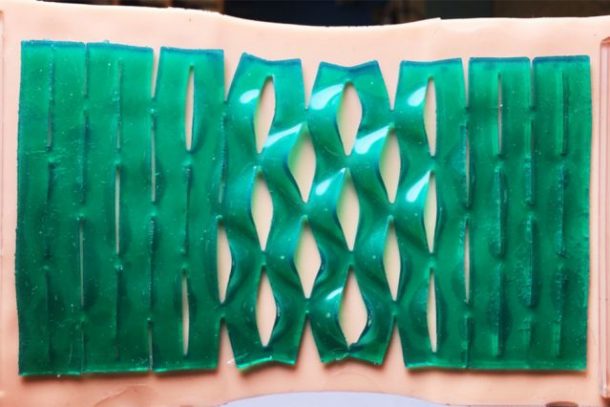If you have ever been hurt on the knee or the elbow, you must know the frustration of keeping the bandage in place around the joint. Scientists at MIT relied on the most unlikely source of ancient paper-folding to develop a new type of bandage.
Kirigami is a type of origami and a well-known folk art in China. Kirigami is different from origami in the sense that it allows gluing as well as folding. The new adhesive film developed by MIT can be attached to highly bendable regions of the body like the elbows and knees owing to the cuts made in kirigami style.

“Currently in the soft electronics field, people mostly attach devices to regions with small deformations, but not in areas with large deformations such as joint regions, because they would detach,” says Ruike Zhao, a postdoc in MIT’s Department of Mechanical Engineering and lead author of the paper detailing the bandage, in a press statement. “I think kirigami film is one solution to this problem commonly found in adhesives and soft electronics.”
Liquid elastomer, rubber solution was placed into 3D printed molds. These molds were printed in such a way that there were rows of offset grooves with various spacings. These spacings were filled by researchers with rubber solution. Lifted out of the molds, the thin elastomer layers were studded with rows of offset slits.

The researchers assured that the film does not necessarily have to be made out of rubber. A wide variety of materials can be used in the kirigami style ranging from soft polymers to hard metal sheets. “In most cases, people make cuts in a structure to make it stretchable,” Ruike says. “But we are the first group to find, with a systematic mechanism study, that a kirigami design can improve a material’s adhesion.”
To test the film’s strength, the adhesive was applied to a volunteer’s knee. The ability to withstand the bending process was tested as compared to a normal adhesive without kirigami cuts. After 100 knee bends, only the kirigami was still sticking.
The 3D printed bandage combined with Kirigami can do the one thing modern technology hasn’t been able to do is to make the bandage stick to human skin better. The team has filed for a patent for their technology and are collaborating with a Chinese medical supply company to make better bandages.

“These three parameters will help guide the design of soft, advanced materials,” Ruike says. “You can always design other patterns, just like folk art. There are so many solutions that we can think of. Just follow the mechanical guidance for an optimized design, and you can achieve a lot of things.”
The 3D printed bandage will definitely solve a lot of people’s frustrations.


